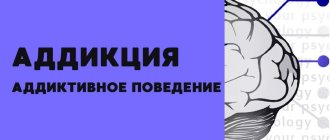© Narrated by Andrey Arkadyevich Shmilovich
, Doctor of Medical Sciences, doctor of the highest category, head of the Department of Psychiatry and Medical Psychology, Russian National Research Medical University named after. N.I. Pirogova, chief physician of the Alter clinic:
Today in the series on comparative age aspects of mental disorders we will talk about mental disorders of childhood
.
We will talk about pre-pubertal age, that is, up to approximately 10–12 years, during which the child goes through several stages of his psychophysical development. This is a very important age from the point of view of the development of his mental functions, his personality, and character. This age also has its most significant periods. They are distinguished by the special vulnerability of the child’s psyche to external social, sometimes pathogenic factors. These periods of particular vulnerability are called age-related crises.
In childhood, age-related crises are well known to psychiatrists, psychologists, and teachers - these are the ages of 3 years and 7 years.
Formation of the first communication connections
At the age of 3, the child finds himself on the threshold of kindergarten. When, on one of the joyful days of September 1, his mother takes him to some strange institution, in which for some reason he must be without his parents for quite a long time, surrounded by very strange people who are similar to him, and even some kind of aunt , calling herself “the educator,” demands that he fulfill the requirements that are necessary.
This age is very important from the point of view of the formation of the child’s first communicative connections with peers. It is at this age, at 3 years old, that the first rudiments of role identity appear. The child begins to recognize himself as an individual and identify himself as an individual, separate from those around him. Finds in himself those traits that are not in others, and finds in others those traits that he does not have. He begins to understand the difference between himself and others, the first signs of his individuality are formed.
This is a very important period, and personally, I categorically do not advise ignoring preschool institutions, kindergartens, sports sections, clubs, where the child has the opportunity to develop a sufficient number of communication skills.
Children at home who sit with their grandparents around the clock and only go out in good weather to the sandbox in the yard are much less well adapted to school than those children who in preschool age had the opportunity to establish communicative connections and form their social role.
What can provoke whims and whining?
Is there a classification of causes?
Here is the situation using the example of a children's sandbox. Another kid comes up to the child and takes the spatula. The reaction can be very different: one will scream, cry, hide behind his mother, and the other will show with all his appearance that he didn’t really want to and will start playing with something else. So these are exclusively individual reactions and it is impossible to create a single classification. Each parent can identify reasons for their child, and it is not a fact that he will guess right. Because violent emotional reactions arise for a combination of reasons, and not because one specific thing annoys the child. The child is tired, wants to sleep, but he was not allowed to do something interesting - he begins to cry and be capricious. And in a different mood, he can calmly take the ban.
Imagine: you come to the clinic, there is a line in front of the office, and the baby does not want to sit quietly in the corner and “make little people out of acorns.” He wants to run. And in this case it is impossible to limit the child’s physical activity, because this can provoke hysteria. Just get up and move around with your child.
Neurotic disorders of childhood
During this period, the child is stressed, he may have a large number of various types of neurotic disorders. And we know these disorders well. enuresis may suddenly appear
– urinary incontinence, we can observe bitten nails in these children. These children may experience a large number of fears; they refuse to sleep in a separate room with the lights off; even if they are forced to sleep in the nursery, they still find the opportunity to sneak into their parents’ bedroom at night and crawl under their blanket.
These children very often develop behavior problems
in case they face quite a lot of stress factors. And kindergarten teachers pay attention to these behavior problems. Sleep disturbances, bad mood, tearfulness, capriciousness, loudness, sometimes excessive demonstrativeness, posturing may appear - we call all this childhood neuroses or childhood neuroses.
Children do not display such neurotic symptoms as we are used to seeing in adults, because their affective emotional sphere has not yet matured, and they cannot experience this or that difficult life situation the way adults do, so most often they react with their bodies.
Children have a very developed psychosomatic reaction
. Their neuroses, as a rule, are of a somatic nature. As I already said, enuresis is one of the types of childhood neuroses. There is also stuttering - this, too, in 90% of cases is attributed to the psychological neurotic problems of the child. This also includes various kinds of conditioned diseases; most likely, they can be found in the form of symptoms from the gastrointestinal tract. Children may experience pain symptoms that are not confirmed by examinations.
Sometimes children experience what is called aspiration syndrome.
, when at the moment of just such another violent emotional reaction they suddenly begin to choke, they experience bronchospasm, the question arises that perhaps this is bronchial asthma. Well, and many, many other such polymorphic, unusual things that happen to children precisely during their age-related crises.
Symptoms
The clinical picture of childhood psychosis largely depends on the specific type of disorder. It is often noted:
- abnormally elevated mood;
- excessive playfulness, inappropriate, noisy fuss predominates;
- disobedience;
- motor activity;
- verbosity.
Usually all of the above is accompanied by importunity, unceremoniousness, and cynical statements. The child seeks to provoke a conflict, behaves aggressively, and is extremely irritable. At the age of puberty, manifestations of sexual activity are likely.
Excessive mobility and activity is accompanied by an accelerated train of thought. This process manifests itself in many questions directed to parents and others (and usually children do not wait for an answer), commenting on everything that is happening around them. There is no feeling of tiredness or tiredness. There are severe sleep disturbances. Appetite increases, and increased food consumption is accompanied by weight loss.
With age, positive emotions are increasingly replaced by negative ones. Adolescents often exhibit antisocial, destructive behavior; attempts to escape from home during periods of exacerbation are not excluded.
In a child, psychosis may be accompanied by somatic symptoms:
- abdominal pain, dyspepsia, nausea;
- headaches, arrhythmia, blood pressure fluctuations;
- neurodermatitis.
For many, it is against the background of psychosis that bronchial asthma, gastritis, and autoimmune disorders first appear.
Clinical signs indicating a severe course of the pathology deserve special attention. This:
- hallucinations, replacement of reality with fictitious (heard in a fairy tale, seen on TV) images;
- loss of interest first in studying, then in everything around him, in his appearance, hygiene, etc.;
- aimless walks, sometimes the child cannot return home on his own;
- loss of modesty;
- delusional ideas;
- obsessive fears.
Problems of school maladjustment
There is also a 7-year-old crisis. This is the age when a child starts school. And here he gains even more independence, here he begins to understand what responsibility is, begins to receive the inclinations of ideas about legal capacity, that is, the idea that his actions have some consequences, and these consequences are connected specifically with him.
At this age, the child is also quite vulnerable. First-graders can stumble already in the first months of school, we call this the problem of school maladaptation
. They are unable to establish connections with classmates, constant disagreements arise with the teacher, they refuse to go to school, they throw tantrums right in class, interfere with everyone’s learning by getting up from their seats, not realizing that they are not allowed to walk around the class. The reaction of teachers means nothing to them; this leads to a serious conflict with many participants in the school process, not only with classmates and teachers, but also with the school principal. And parents are also starting to take part in this.
Many parents take the child’s side, considering him undeservedly offended. They see the problem in the incompetence of teachers and begin to blame teachers, often adding fuel to the fire of these neurotic symptoms and behavioral disorders that I have already mentioned.
What are children's whims and what is their nature?
This is a question for which there is no encyclopedic answer. All adults put different meanings into this word. In fact, parents are more often faced with a child’s violent emotional reaction to some undesirable events for him, calling it whining, hysterics, whims, which in fact it is not. The baby does not yet know how to express his desires and feelings in other ways. Much also depends on the child’s temperament: if he is easily excited, it is difficult for him to stop, then he will scream, fight, cry and stomp his feet more often than his peers. And this does not mean at all that the child is poorly brought up - it’s just that the processes of self-regulation in him have not yet matured. And this, of course, requires a lot of patience from parents.
Early mental illness. Mental retardation
In addition to neurotic disorders, quite serious mental illnesses can also begin in childhood, among which today, perhaps, we can classify two diseases as the most common of all other mental disorders of childhood.
The first disease is called mental retardation
. Unfortunately, it happens quite often. If we are talking about severe forms of mental retardation, then it attracts attention even in the first years of life. If we are talking about its mild or borderline forms, then this only manifests itself when the child goes to school, and from the first days he does not keep up with his peers in mastering the material.
Mental retardation can be different; there are many reasons for its occurrence. Among them are many different kinds of neurological or therapeutic, pediatric diseases that the child suffers from very early infancy. Or which started a little later. These include traumatic brain injuries, and some kind of neuroinfections, perhaps some kind of genetic, hereditary, chromosomal pathology, which leads to underdevelopment of the central nervous system and, accordingly, to mental disorders in the form of mental retardation.
Children with mental retardation are more vulnerable to neurotic symptoms, since in the case of mild mental retardation they understand and realize the fact of their inadequacy and see how they lag behind their peers. And they very often find themselves at the center of so-called bullying. Peers begin to mock them, painfully making fun of their odd behavior.
In these situations, when we are dealing with mental retardation, it is very important to promptly resolve the issue of the form of education, to what extent this form in a regular comprehensive school will be comfortable for the child himself if he does not have time there. And how much easier it will be for him to study in a school where the requirements for the educational process are somewhat different, and they are close to the individual, as we say, Waldorf requirements.
Autism Spectrum Disorders
The second most common mental disorder in childhood is autism spectrum disorder. Abbreviated as RAS. The structure of these disorders includes many different types of clinical units. One of the most striking and classic manifestations of autism spectrum disorder was described at one time by the domestic psychiatrist Grunya Efimovna Sukhareva and her foreign colleague Hans Asperger.
This form is now called Asperger's syndrome.
, that is, early childhood autism syndrome, in which a rather pronounced asynchrony of the child’s mental development occurs. In his development, we see a significant acceleration in relation to peers of intellectual, cognitive functions, and to a significant extent a lag in relation to emotional and volitional functions.
The personality of such a child is formed in a deformed way; he ultimately finds himself deprived of the mental capabilities for communication with peers. He has no choice but to withdraw into his own inner world, which is called the “autistic world.” Autistic world
- this is the world of his fantasies, attitudes, known very often only to him. Help for such a child can only be provided by a specialist who has managed to at least somehow look into this world, not to mention getting into this world and understanding its laws.
Atypical childhood autism
In addition to Asperger's syndrome, autism spectrum disorders also include other variants: Kanner's syndrome, Geller's syndrome - this is the so-called atypical childhood autism. We begin to talk about atypical childhood autism when, against the background of autistic manifestations, some psychopathological phenomena begin to appear in a child, indicating to us the onset of some kind of mental illness. For example, he begins to have some hallucinations, or he becomes so detached from what is happening that he generally stops reacting to what is happening around him and “freezes” - this is the so-called catatonia syndrome. However, a complete picture of mental illness does not emerge. And these symptoms are ultimately reversible.
We must remember that early childhood autism and all autism spectrum disorders are a very ambiguous group in prognostic terms. In particular, there are options that have a fairly favorable prognosis; literally, all manifestations of autism completely disappear with age and appropriate treatment. At the other pole are those forms of childhood autism that, with age, unfortunately transform into current mental illnesses, more typical of adolescence or adulthood.
Signs of a depressive phase
Bipolar disorder begins in most patients without noticeable bright manifestations.
In a typical case of MDP, there are subtle fluctuations in the background mood with cycles of several days or weeks. Researchers of the problem emphasize that the unfavorable course of bipolar disorder is the onset of the disorder from the first depressive episode. During the depressive phase, 89% of suicides or suicide attempts occur. Depression occurs when high productivity of mental processes is abruptly replaced by its decline. Specific manifestations of the phase:
- severely depressed mood;
- slowing down the thought process;
- slower speech motor activity;
- decreased or complete absence of appetite, perverted taste sensitivity;
- weight loss;
- prostration;
- in women - problems with menstruation;
- mothers have problems with maternal instinct;
- lack of sexual desires;
- melancholy, which is felt physically as heaviness in the chest area;
- attacks of tachycardia, constipation, mydriasis (dilated pupils of the eyes);
- self-flagellation, guilt;
- increased anxiety;
- cognitive impairment.
Depression sometimes takes on an endogenous form - due to the biological nature of the disorder, not only mental, but also somatic and endocrine disorders occur.
Sometimes an “atypical” course of depression develops—increased appetite, hypersomnia. There is also a hypochondriacal type of disorder - in this case, obsessive hypochondriacal beliefs with an affective overtone are noted. With the delusional type of progression, “Cotard's syndrome” is present - in addition to anxiety, delusional beliefs of a fantastic nature are observed. With agitation depression there is noticeable nervous overexcitation. With the asthenic variant, the patient experiences a loss of the ability to feel anything.
Patients experience unmotivated sadness and a feeling of hopelessness especially acutely - from several hours to several days without the ability to be distracted by anything else. The person withdraws into himself and stops contacting family members and friends. Interest in those activities and things that previously had interests is completely lost. Low ability to learn new things. Appetite may be uncontrollable or absent.
Fatigue and lack of energy are felt around the clock. Sleep is interrupted, and episodes of awakening occur frequently, especially in the early morning. After sleep, a person does not feel rested. Memory problems arise and concentration is poor. Thoughts about suicide appear - a person experiences a clear conviction that life has no meaning and will never bring pleasure. With parasuicidal behavior, a syndrome of “tunnel thinking” is observed.
The depressive phase is very dangerous due to the high level of suicidal tendencies, parasuicides, and auto-aggressive acts. It is recommended to hospitalize the person for subsequent treatment in a hospital setting. 24-hour monitoring of the patient’s condition and indicators is important.
Onset of adult mental illness. Childhood form of schizophrenia
In addition, in childhood we can, unfortunately, observe the onset of adult mental illness. It is rare, however, that childhood forms of schizophrenia
. Its course is usually very difficult, unfavorable and malignant. In these cases, the child finds himself at the mercy of very severe painful symptoms when he hears voices or sees some visual images that cause him certain fears. When he, being in this psychotic state, hides from these ghosts, which seem very dangerous to him and are present somewhere nearby.
It is practically impossible to establish any contact with this child on a verbal level. The only way to help is to hospitalize him in a children's psychiatric hospital. Such hospitals exist; they specialize specifically in childhood mental illnesses, when specialists in this case have experience working specifically with children.
Psychosis in a 2 year old child
Often parents or other adult relatives of children wonder: “the child has psychosis, what to do.” It is necessary to determine the reasons that provoke the appearance of this condition. Often, factors that provoke the development of psychosis can be taking medications, high fever, meningitis or hormonal imbalance, brain injury or intoxication, decreased immunity, deficiency of B vitamins, and electrolysis disorders. Often psychosis resolves when the physical problems described above cease to have an impact.
It is also not uncommon for this condition to occur in children without concomitant diseases or due to “bad” heredity. The course of such disorders can be rapid or protracted, or episodic over several months, often even years. Psychiatrists have suggested that their occurrence is provoked by the presence of biochemical abnormalities, which can be acquired or congenital. There are children born with severe constitutional defects. In this case, the disorder may be spontaneously manifested at a very early age.
My child has psychosis, what should I do? If you suspect that a two-year-old baby has this disorder, you should contact the following specialists: an otolaryngologist, a speech therapist and a neurologist, who will examine the baby’s physical condition and her psyche, test her intellectual abilities, and check her hearing and speech. If it turns out that psychosis in a 2-year-old child appeared as a consequence of a physical illness, then the diagnosis comes down to finding its cause.
Treatment of psychosis in children depends on the type of illness. Often it will be enough to eliminate the cause that provoked the psychotic state. In more complex situations, medications can be used to compensate for biochemical disorders. However, treatment of early psychosis is considered ineffective. In case of aggressive behavior, in rare cases, tranquilizers may be prescribed.
Favorable treatment prognosis
There are also many other mental illnesses, it is almost impossible to cover everything. The only thing that needs to be said is that children with certain mental disorders, as a rule, are treated quite well, that is, it is sometimes possible to achieve much greater results with them than with adults. But only under one condition: if their relatives, especially parents, who are extremely concerned about the health of their child, agree with psychiatrists that their beloved child needs the help of a child psychiatrist.
Child psychiatry, as a rule, uses not only medical, that is, purely psychiatric technologies, with medications or some other methods of treatment. Psychologists are mostly involved in child psychiatry. Family psychologists conducting group psychotherapy, teachers, various kinds of educators, defectologists, speech therapists, and pediatricians participate in the provision of assistance. As a rule, this is a whole multi-professional team that takes on the child’s health and which jointly solves various aspects of his problem.
Seeking medical help in such a situation will greatly facilitate the task of diagnosis, since in child psychiatry there are many methods, including very accurate, almost 100% methods for diagnosing certain mental illnesses.
For example, genotyping is very widely used, when we can with a high degree of probability diagnose a particular disease associated with a mutation or genetics. The main thing is that the child is in the field of view of specialized specialists. The main thing is that he receives the medical care he needs on time in order for his future life to be healthy.











